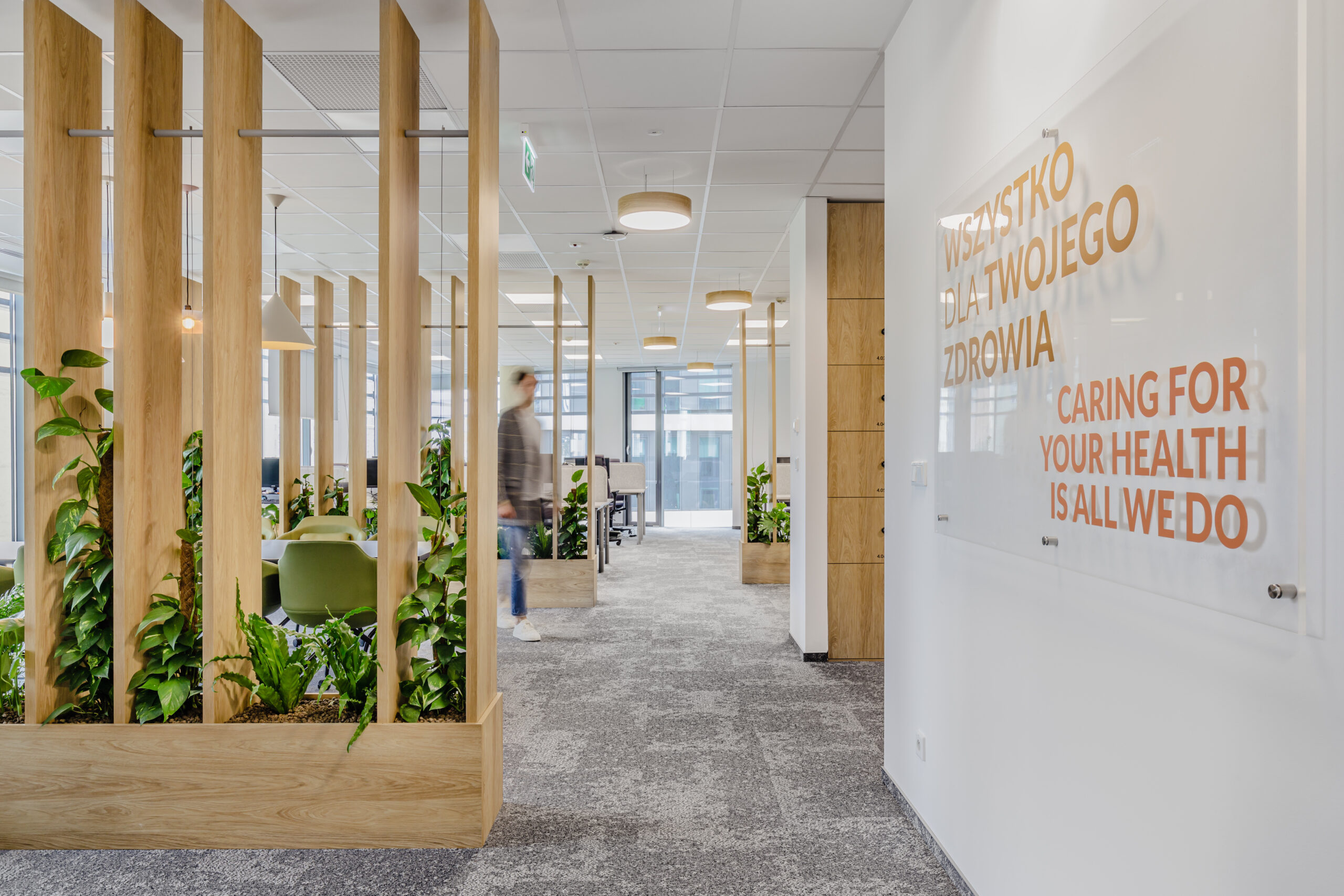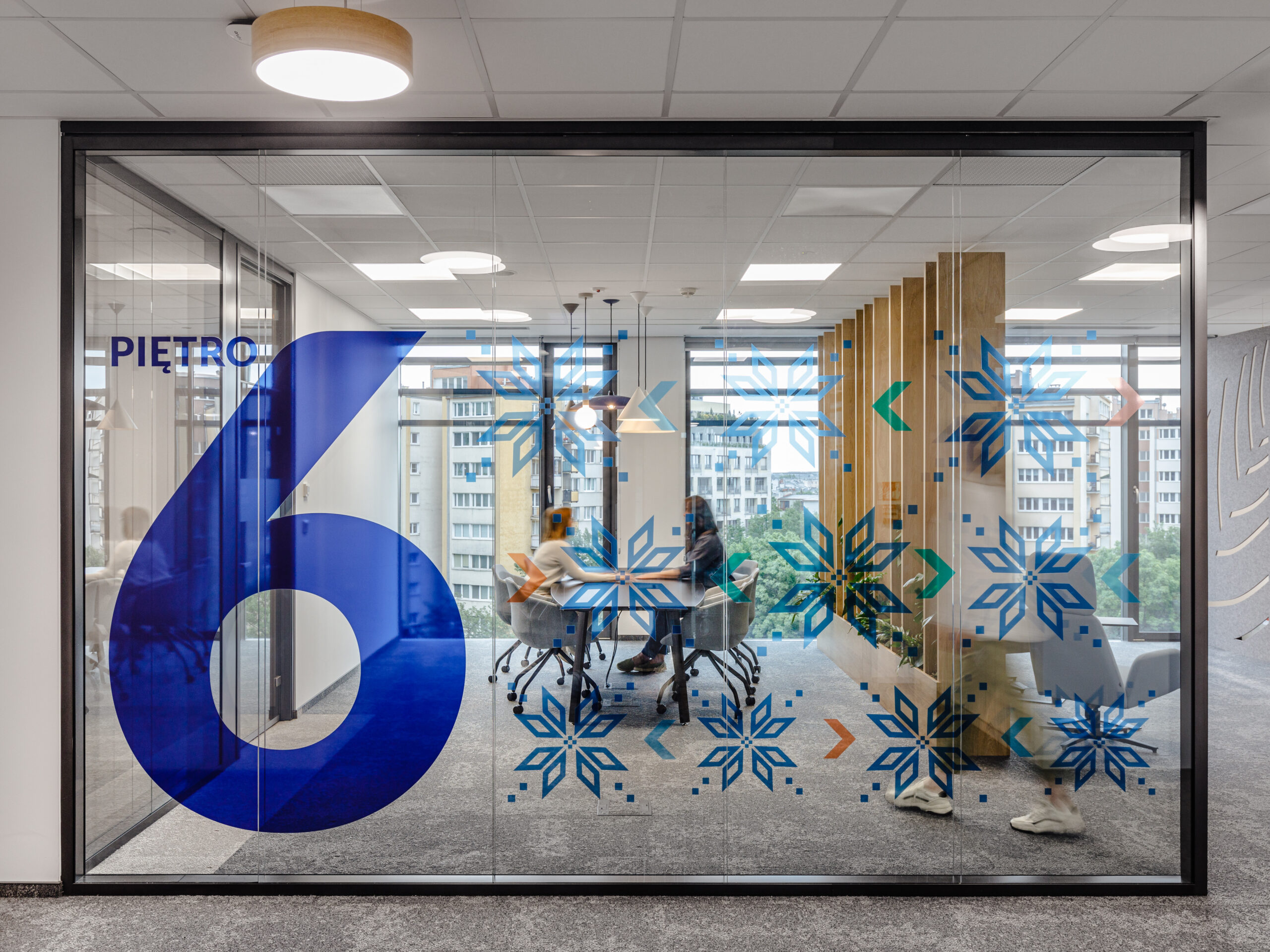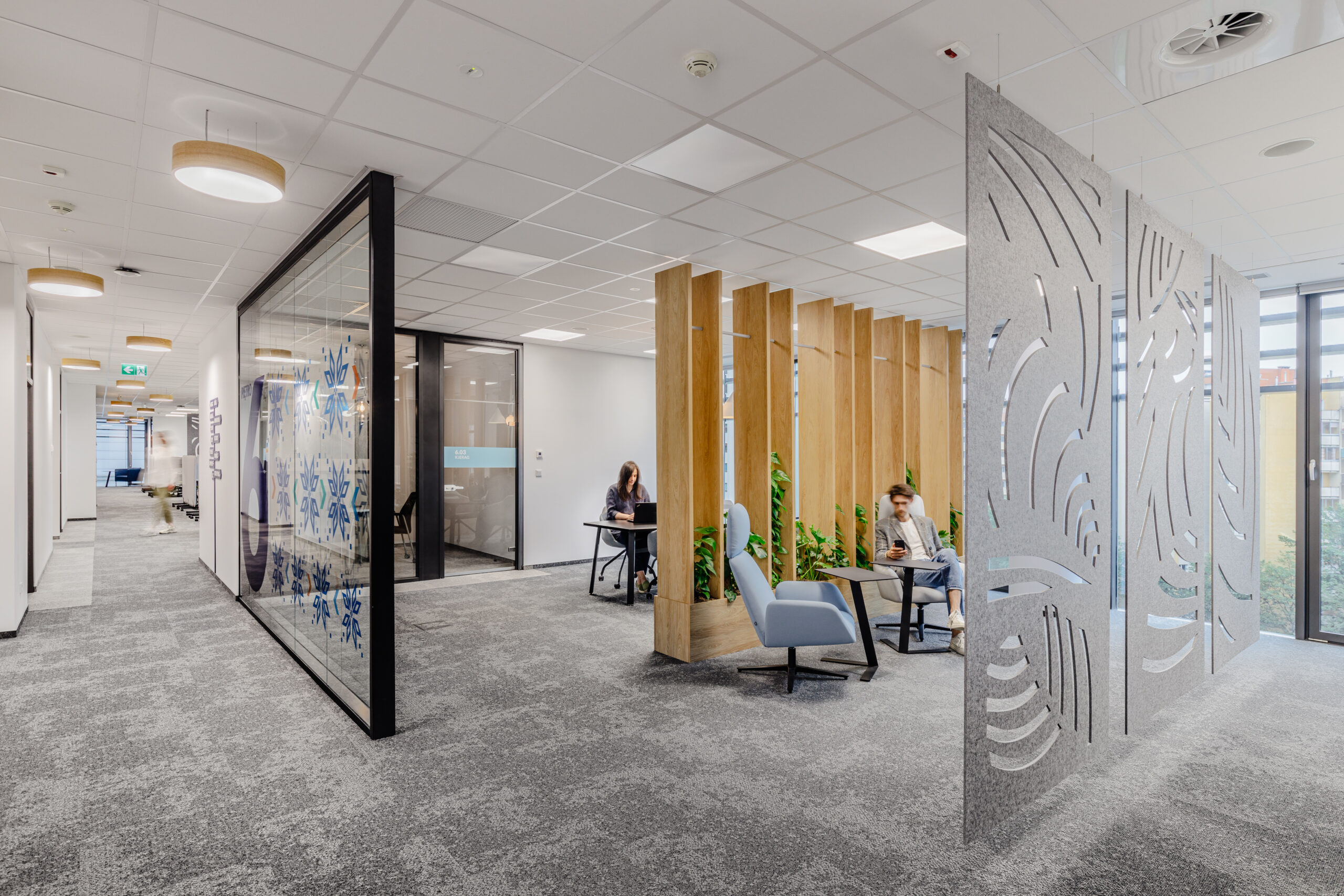Fit out realizations in 2023. What trends are shaping the office fit out market?
The process of redefining commercial spaces is already in progress: tenants are adapting them to the new needs and requirements caused primarily by the transformations taking place in the style of work, and building owners are adapting them to the requirements of these tenants. The last three years have brought many changes to the commercial real estate market. The Covid-19 pandemic, the transition of companies to hybrid work supported by the dynamic development of new technologies, the country’s difficult economic situation resulting in inflation and high energy prices, and, in the background, Russia’s invasion of Ukraine and uncertainty – these are key factors that currently determine office fit out trends.
Bartosz Jankowski and Krzysztof Pasterski, Colliers Define experts, emphasize that fit out projects, i.e. the broad process of space creation in commercial buildings, are also undergoing a transformation simultaneously. Clients are now hoping for a comprehensive process, which will result in a functional space that satisfies the individual needs and requirements of users. So what will fit out realizations be like in 2023?
How has the material supply market changed? What will the situation look like in 2023?
Several key factors stemming from the difficult macroeconomic situation can be identified, all of which are significantly shaping the current performance of the commercial real estate market. These include delays in supply chains and the risk of unavailability of construction materials, as well as increases in raw material costs due to inflation and uncertainty in the energy market. And this is all in the midst of ongoing projects and months-long processes.
Although we do not record such sudden changes and accumulating problems as in the first half of 2022, they should still be kept in mind when budgeting for current investments. The situation is leading to a certain transformation in the way of thinking at the planning stage: the rising prices of building materials need to be offset by optimizing the arrangement of space. This requires close cooperation between the architect and the contractor.
What will fit out investments look like in times of crisis? Will the economic situation affect fit out investments?
Despite the worrisome economic situation, investment in new office fit outs remains steady. Investors and tenants looking for savings are focusing on the process of planning solutions and reducing the cost of the project. They value more such projects in which the budget is prepared for the occurrence of price increases or the process is conducted in such a way that the tenant does not bear this risk.
In times when the delivery of fitouts was cheaper, those who commissioned them were more likely to accept the risk of cost increases. Today, this is a rarity, which is why they seek such contractors who are also advisors and have a reliable network of suppliers and subcontractors involved in the project.
The contradiction of the two factors – the difficult economic situation and the simultaneous continued interest of investors – can be reconciled and work optimally in the market, but requires a proper planning process.
How is the approach to managing office fit out projects changing?
In the traditional model, fit out implementations involve cascading activities and the entire process engages a great many parties: the developer, the landlord, space designers, building consultants, architects, material suppliers and subcontractors, as well as construction companies. This means that the commissioning party – most often the tenant – can be overwhelmed with a mass of coordination responsibilities and invisible costs that will add to the budget. Moreover, the risks of the process occurring at the interface between various entities are ultimately borne by the tenant.
More often we hear questions from investors as to whether we can take a platform approach to the process and fully address the problem of a large number of entities to coordinate. This gives the client security and legitimacy in the decision, and protects the client at every stage of implementation. In Colliers Define, we introduced such a solution – a unified process that is handled from the beginning by one specialized team: engineers, project and construction managers, designers and space strategy consultants. This relieves the responsibility of the tenant or building owner for the quality of implementation and its costs. In such situations, everything is planned comprehensively.
If all parties are involved in the process from the beginning, they can spot inaccuracies and avoid unnecessary rework, extended time for completion and increased costs, i.e. optimize the entire process in terms of execution. Therefore, “service excellence” activities refer to the ability of service providers to consistently meet and even exceed client expectations. The basis for this is a harmonized execution process and an experienced team that collaborates on multiple projects.
What trends in the fit out implementation will dominate in 2023?
Trend 1. Hybrid work model and expansion of co-working spaces
We observe that if, over the distance of the last two years, companies have not changed their office space, these places no longer meet the requirements of the work system that is currently present in these organizations. Hybrid work models have been permanently adopted in a vast number of companies, and the legal regulations being introduced now, including amendments to the Labor Code, will make them commonplace. This transformation into the hybrid way of working is the main trend that is most boldly pushing new realizations of fit outs.
Before the pandemic in companies, each employee had his or her own workspace: desk, computer, lockers, and even a favorite cubicle. Today, office space is undergoing a transition, being adapted to the new needs and system of doing work. Employees mostly use their offices two or three times a week for meetings with clients or the project team. Therefore, the arrangement of office space is mainly focused on expanding co-working space – additional smaller and larger conference rooms – and reducing the number of desks.
Each company has different goals, needs and requirements, so it is important to understand the client before the design process even begins. The office – with the current work model – is a place that competes with an employee’s home. Therefore, it must be equipped with such tools, solutions, and capabilities that are not available there, and at the same time i,t should provide employees with a home-like comfort.
Trend 2. Development of A/V systems and the importance of details in the office arrangement planning
Audio-Video technology is now essential for any company to function in the new office reality. Its proper selection is crucial and should take place as early as the investment planning stage. AV systems from different manufacturers have different installation requirements. Therefore, it is important to choose hardware and software before the installation is done. This is a seemingly minor detail that not everyone is aware of, but doing it in the reverse order will limit the selection of the right solution and increase the risk of having to rebuild and raise costs. Nowadays, contractors are planning such detailed solutions with much more caution – already at the project stage.
Trend 3: Fit out of workspace, and ESG strategy
Currently, most companies are either implementing or have already implemented an ESG strategy, with the aim of achieving transformation in three basic aspects: environmental, social, and governance. Therefore, the workplace itself, namely the office, has become an important object in this process. The majority of companies are adopting the environmental aspect as a key aspect of their strategy and aiming to introduce “green” solutions.
In fit out projects, in line with the above aspect, the mere use of eco-friendly materials optimizes the cost of the entire project. Among other things, recycling things and reusing them has this effect, examples of which include using desks and chairs from the previous office in new spaces, refurbishing doors through varnishing, and reusing other building materials such as glass walls. In one fell swoop, we are reducing our carbon footprint and cutting costs.
Project for Medicover, where elements from the previous office’s arrangement have been reused:
ESG has attracted tremendous interest among property owners and tenants who are keen to be eco-friendly, minimize their carbon footprint, and not harm the environment. We estimate that the vast majority of fit out projects being implemented in 2023 will include this aspect in in their initial considerations.
Trend 4. Value engineering, i.e., the automation of pricing and the manner of working on a project
Linked seamlessly to the optimization of materials with the aim of reducing the carbon footprint is also the topic of work automation. A complex way of optimizing project budgets, or so-called value engineering, is becoming increasingly popular as well. This is an analysis of material selection – in an ideal process carried out at the design stage together with architects – that aims to achieve the same functionality of the project at the lowest possible cost while maintaining the required quality of materials. Technology is important in our work, so thanks to automated material databases and architect coordination, we are able to eliminate unnecessary office finishing elements at the design concept stage. We are also in the early stages of implementing the function of calculating the carbon footprint of the materials in question – which will help clients decide not only on the basis of cost, but also as part of environmentally friendly measures.
How are fit out prices shaping up in 2023?
The cost of a fit out project depends on a number of factors, including the needs of the tenant, the condition of the commercial property, the availability of materials, and the delivery time. Persistent inflation and problems arising from the political and economic situation affect the above elements, generating the risk of rising project costs. That is why it is so important to choose a competent partner for the implementation of a fit out project, who, in accordance with a full understanding of the needs and culture of the company, will guide us in a planned and predictable manner in terms of expenditures.
To our knowledge, the prices are as follows:
For the remodeling of the current space (REFIT):
- starting at 400 EUR low standard / small remodeling
- 700-800 EUR medium standard
- 1200+ EUR high standard
In the case of construction of a new space (Shell&Core):
- starting at 800 EUR low standard
- 1200-1400 EUR medium standard
- 1600+ EUR high standard





